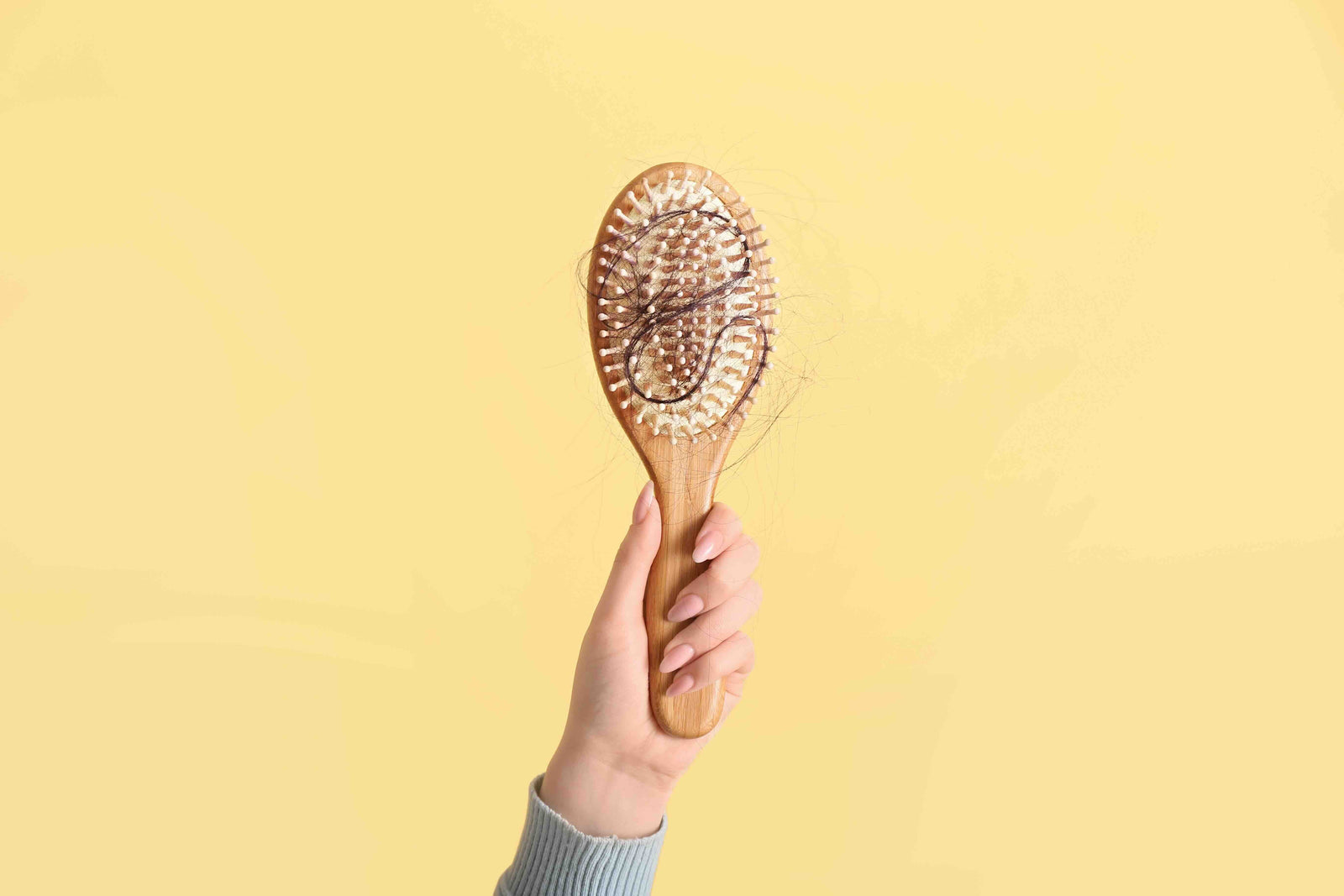Top 5 Types of Hair Loss: Understanding Causes and Patterns

Introduction
Hair loss is a common concern that impacts millions worldwide. Though often dismissed as a cosmetic issue, losing your strands can have profound emotional and psychological effects. It can occur for various reasons, ranging from genetics to medical conditions. This guide explores the most prevalent types of alopecia, providing insights into their causes and characteristics
How Common is Hair Loss?
Alopecia is more common than you might think, affecting around 80 million people in the United States alone. It can occur due to various factors like genetics, hormonal changes, stress, and medical conditions. Understanding the type of hair loss you have is crucial in finding the right treatment.
Is Balding Permanent?
Alopecia, or hair loss generally falls under two categories: scarring and non scarring. Scarring alopecias result in destruction of the hair follicle and the matrix around the follicle making the loss permanent. Non scarring alopecias on the other hand, maintain the hair follicle in a resting state, but the potential for hair regrowth through the natural hair growth cycle theoretically remains possible.
Over What Time Does Hair Loss Occur?
This is largely dependent on the cause of hair loss. Androgenic alopecia or hereditary hair loss, for instance, can occur over years and continues to progress with time. On the other end of the spectrum, a process like telogen effluvium results in rapid sign of hair loss in response to stressful impulse such as a sudden hormonal imbalance or life stress.
The #1 Most Common Cause of Hair Loss

The number one cause of loss is normal loss of hair. The follicle progresses through the various stages of the hair growth cycle, from the anagen phase to the telogen rest phase. At any given time small amounts of hair are in the resting phase and preparing to fall out. The loss of 50-100 hairs per day is considered a natural response to this. Further hair loss beyond this amount may be secondary to an accelerated process.
Diagnosing The Cause of Your Hair Loss
The most valuable tool in the diagnosis of alopecia is the patient history. For instance we noted a gradual, slow hair loss is more consistent with certain causes of hair loss. Similar questions are reviewed such as associated symptoms like itching which will evaluate for possiblity of tinea capitis or a fungal infection. In rare cases blood work will need to be reviewed to evaluate for hormonal disruptions or nutrient deficiencies. In even more rare cases patient will need a scalp biopsy.
5 Most Common Types
1. Androgenetic Alopecia (Male and Female Pattern Baldness)

Androgenetic alopecia is the most common type, affecting both men and women. It is strongly influenced by genetics and hormones.
In Men (Male Pattern Baldness)
This condition typically results in a receding hairline and thinning at the crown. Over time, these areas may merge, leading to significant baldness in the center of the scalp, with coverage remaining at the sides and back.
In Women (Female Pattern Baldness)
For women, androgenetic alopecia manifests as diffuse thinning, primarily on the top of the head, while the frontal hairline often remains intact. This pattern creates a "Christmas tree" shape when viewed from above.
Symptoms
-
Gradual thinning and widening part in women.
-
Receding hairline starting from the temples.
-
Thinning at the crown in both genders.
Treatment Options
-
Minoxidil, an FDA-approved topical solution, is effective for both men and women.
-
Finasteride is commonly prescribed for men but less effective for women, it functions as a dht blocker originally prescribed for prostatic enlargement.
-
Hair transplantation can restore lost hair by relocating hair follicles from donor areas to balding regions. We recommend leaders in FUE Hair Restoration AlviArmani.

For additional supportive care in managing thinning hair, Strengthen Every Strand: Naturale Care For Thinning Hair offers a range of natural remedies. For a full hair growth system visit our sempre product line page.
2. Telogen Effluvium
Telogen effluvium is a temporary form of alopecia, usually triggered by significant stress or sudden changes in the body.
Causes
-
Physical stress, such as surgery or childbirth.
-
Emotional stress from traumatic life changes.
-
Nutritional deficiencies, especially iron or vitamin D.
Symptoms
-
Sudden and noticeable thinning, often over the entire scalp.
-
Hair shedding that may occur in clumps when brushing or washing.
Treatment
In most cases, telogen effluvium resolves as the underlying issue improves. Eating a balanced diet rich in essential nutrients can expedite recovery. Stress management techniques like mindfulness may also reduce hair loss triggers over time.
Click here for more information on telogen effluvium in women.
3. Alopecia Areata

Alopecia areata is an autoimmune condition where the immune system attacks hair follicles, causing bald patches.
Types
-
Patchy Alopecia Areata: Creates small, round bald spots.
-
Alopecia Totalis: Results in complete loss on the scalp.
-
Alopecia Universalis: Causes loss across the entire body.
Symptoms
-
Sudden onset of oval or circular bald patches.
-
Hair may regrow but is prone to falling out again.
Treatment Options
-
Corticosteroid injections or topical applications may stimulate regrowth.
-
Immunotherapy is sometimes used for more extensive cases.
-
Exploring emotional support can help patients navigate the psychological challenges of alopecia areata.
If you’re looking for solutions to maintain overall scalp health, visit Hair Loss Solutions for proven treatments.
4. Traction Alopecia
This type of alopecia is caused by excessive tension on hair follicles due to certain hairstyles.
Causes
-
Hairstyles like tight ponytails, braids, or extensions.
-
Prolonged use of accessories that pull on the scalp.
Symptoms
-
Thinning around the temples and hairline.
-
Breakage and scalp soreness if prolonged tension occurs.
Preventive Measures
-
Opt for looser hairstyles and avoid repetitive pulling.
-
Use nourishing treatments or scalp massages to restore follicle health.
Identifying this early can prevent permanent follicle damage. Products from Hair Care & Hair Loss can promote hair strength and resilience.
5. Scarring Alopecia (Cicatricial Alopecia)
Scarring alopecia results in permanent alopecia due to follicle destruction caused by inflammation.
Types
-
Frontal Fibrosing Alopecia: Gradual loss starting at the front.
-
Lichen Planopilaris: Causes patchy loss on the scalp with visible redness.
Symptoms
-
Scalp redness, burning, or itching.
-
Formation of scar tissue where follicles once existed.
Diagnosis and Treatment
-
Early consultation with a dermatologist is crucial.
-
Anti-inflammatory medications often slow down progression.
-
Hair transplantation may be considered if scarring is minimal and stable.
Conclusion
Understanding the types of hair loss is the first step toward effective management. Each form of hair loss has unique causes, symptoms, and treatments. From genetic conditions like androgenetic alopecia to stress-induced telogen effluvium, addressing the underlying issue is key for intervention. Consultation with a healthcare professional can provide personalized guidance based on individual needs.
For tailored solutions, explore additional resources like Men's Hair Care: Dealing With Hair Loss.
References
-
Gupta M, Mysore V. Classifications of Patterned Hair Loss: A Review. J Cutan Aesthet Surg. 2016 Jan-Mar;9(1):3-12. doi: 10.4103/0974-2077.178536. PMID: 27081243; PMCID: PMC4812885.
-
Phillips TG, Slomiany WP, Allison R. Hair Loss: Common Causes and Treatment. Am Fam Physician. 2017 Sep 15;96(6):371-378. PMID: 28925637.





Leave a comment